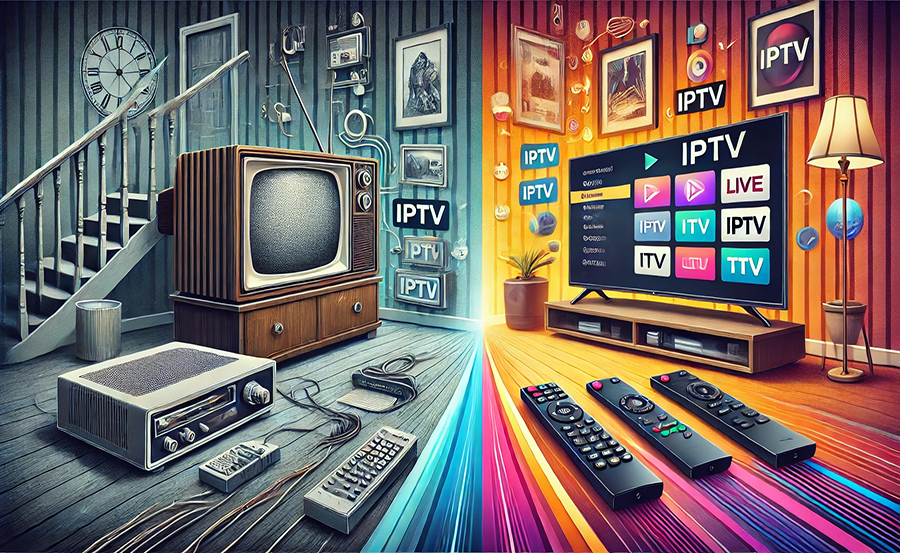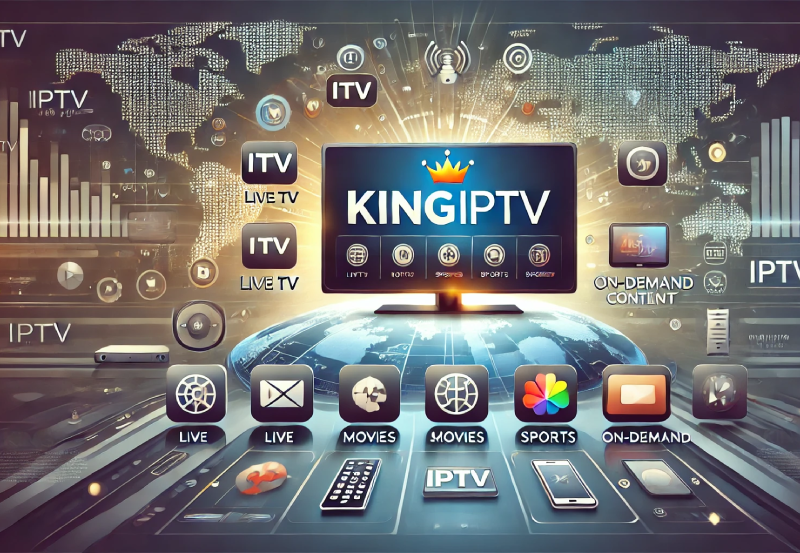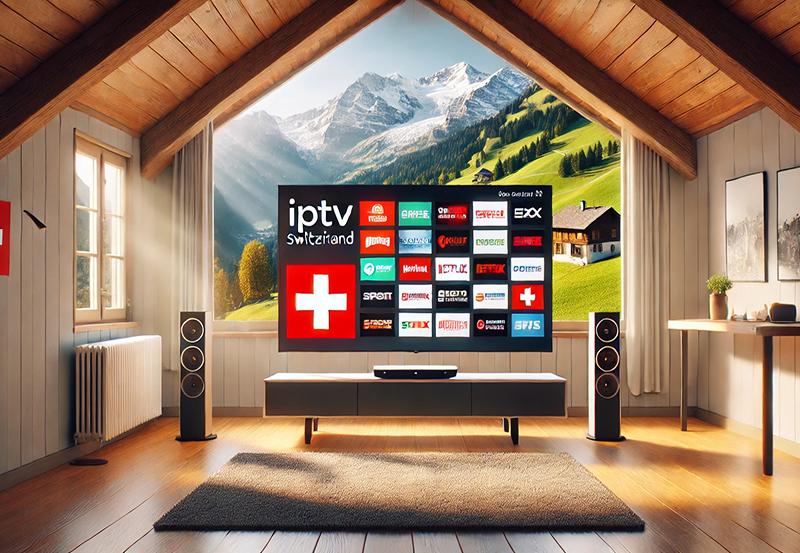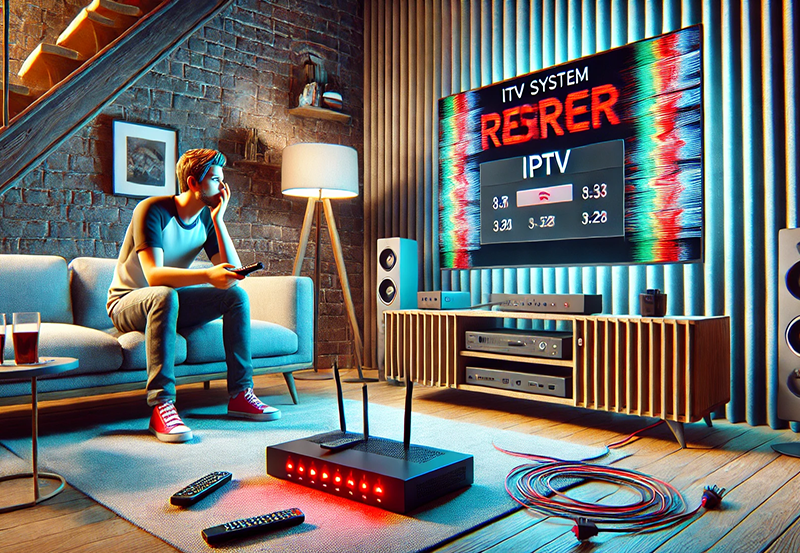In the modern era, where technology incessantly transforms the way we live, finding sustainable solutions has become a pressing need. As we sift through ever-evolving entertainment options, let’s pause and consider the environmental impact of our choices. Enter IPTV, or Internet Protocol Television, a service that not only offers a slew of features and content but also stands as a more environmentally considerate choice compared to traditional cable. This article delves into how IPTV can play a crucial role in reducing your carbon footprint without compromising on quality entertainment. Let’s take a closer look at why switching to IPTV could be the wise choice for a sustainable future.
The Evolution of Television: From Cable to IPTV
Television has undergone a dramatic transformation since its inception. We’ve moved from bulky CRT screens with limited channels to high-definition streaming services accessible from almost any device. This evolution reflects not just a change in technology, but also a shift in consumer expectations and environmental considerations.
With cable TV, the infrastructure itself—miles of coaxial cables and maintenance facilities—has a significant environmental footprint. In contrast, IPTV uses existing Internet infrastructure, leveraging technology already employed for other digital services. This reduces the need for additional physical resources and lowers the impact associated with installation and maintenance.
Pro Tip:
Stream top-tier entertainment with IPTV USA, offering unmatched access to live TV and on-demand content.
Understanding IPTV Technology
IPTV, which stands for Internet Protocol Television, delivers television content over IP networks. Unlike cable, which relies on physical cables to transmit data, IPTV streams content directly over the internet. To enjoy IPTV, customers typically need a smart TV or a streaming box and a reliable internet connection.
This method of transmission is both efficient and versatile. With the rise of streaming TV apps, users can access a diverse range of content easily. This flexibility also introduces the potential for more eco-friendly practices within the industry.
Why Cable Infrastructure Falls Short
Traditional cable television requires a complex network of physical connections, which not only demands significant resource investment but also contributes to ongoing environmental degradation. The production, installation, and maintenance of these systems involve considerable emissions and waste.
Conversely, the leaner, more adaptable nature of IPTV infrastructure minimizes these impacts, highlighting the green advantage IPTV holds over traditional methods.
The Environmental Impact: Going Green with IPTV
Opting for IPTV over cable is not just a digital upgrade—it’s an eco-conscious decision. IPTV reduces energy consumption and lessens waste generation compared to its bulky cable counterpart.
Reduced Energy Consumption
One of the primary benefits of IPTV is its significantly lower energy requirement. While cable boxes are notorious for being energy hogs, IPTV utilizes fewer resources. This translates into not only a lower environmental impact but also potential savings for consumers on their utility bills.
Service providers aim to optimize streaming service efficiency, ensuring that delivering high-quality content does not come at the environment’s expense. Such advancements align the industry with growing eco-friendly trends and regulations.
Lesser Waste Generation
With traditional cable services, hardware upgrades often result in electronic waste. Set-top boxes and other peripheral devices frequently become obsolete, contributing to e-waste, which is challenging to recycle effectively. IPTV, being more software-centric, mitigates this issue considerably.
The shift towards IPTV involves less physical hardware, thus minimizing the waste typical of continuous technology upgrades. This supports the broader movement toward sustainable consumption patterns in the digital age.
IPTV Service Provider Comparison: A Look at Eco-Friendly Options
When exploring the best in IPTV entertainment, consider that not all service providers are created equal. Some offer more environmentally sound practices and services than others. Let’s take a look at the critical factors in choosing an IPTV service provider with green initiatives.
Criteria for Eco-Friendly IPTV Providers
- Use of renewable energy sources for data centers.
- Commitment to minimizing carbon emissions.
- Efficient data delivery techniques to reduce energy consumption.
- Recycling programs for obsolete equipment.
By evaluating providers against these criteria, consumers can make informed decisions that align with their environmental values.
Top Providers with Green Initiatives
The market for IPTV services is competitive, with many providers vying for consumer attention. However, only a few make eco-friendly operations a priority. Researching and selecting a provider that demonstrates a clear commitment to sustainability can magnify your positive environmental impact.
Be sure to investigate their policies on energy consumption, waste management, and technological efficiency. These aspects contribute significantly to the green qualifications of any given service provider.
User Experience and Environmental Responsibility
The environmental advantages of IPTV do not mean sacrificing user experience. On the contrary, many find that IPTV offers superior functionality and flexibility compared to traditional cable services.
Enhanced Viewing Experience
IPTV provides an array of features that enhance user experience. On-demand content, live streaming, and interactive features allow users to personalize their viewing. Streaming TV apps extend content accessibility beyond the living room, making it possible for audiences to enjoy shows and movies on any device—anytime, anywhere.
This personalized approach not only improves entertainment quality but also reduces wasted energy from unused services running continuously in the background.
Seamless Integration with Smart Technology
IPTV services are often highly compatible with smart home devices, creating an integrated entertainment system that interacts smoothly with your household’s other connected technologies. This synergy not only adds convenience but further pulls back the curtain on resource waste by making use of energy-saving features.
Unified systems reduce the number of separate devices needed, further lowering the ecological footprint of home entertainment setups.
Challenges and Opportunities in the IPTV Sector
While IPTV presents many ecological benefits, it isn’t without challenges. Understanding these can help guide further innovation and adoption of greener practices in the field of digital entertainment.
Network Infrastructure Demands
As with any internet-based service, IPTV requires reliable broadband infrastructure. This necessity poses both a challenge and an opportunity. Increasing network capacity to handle higher demands without escalating energy consumption remains a key focus area for providers.
Optimizing data transmission processes can significantly cut down on energy use, opening pathways to not only support larger audiences but do so sustainably.
Balancing Consumer Needs and Environmental Goals
Another challenge is meeting consumer demand for increasingly higher-quality content while minimizing ecological impact. Services must navigate the intricate balance of providing premium content without undue environmental strain.
In this balancing act lies opportunity: by setting industry standards and encouraging competition between providers on these grounds, IPTV can forge a path toward greener technology in all forms of digital consumption.
Innovative Trends Pushing IPTV Forward
The IPTV industry is poised to continue evolving, propelled by innovative trends that promise to enhance both service offerings and environmental sustainability. Staying informed of these trends is crucial for both providers and consumers who aim to prioritize eco-friendliness in their entertainment choices.
Integration of AI and Machine Learning
AI and machine learning are at the forefront of the IPTV innovation race. These technologies help predict viewing patterns, allowing providers to optimize streaming protocols and reduce energy consumption by intelligently adjusting resource allocation.
Such advancements potentially revolutionize the efficiency of IPTV services, serving as a catalyst to further diminish their environmental impact.
Greater Emphasis on Personalized Content Delivery
By employing AI and machine learning, IPTV services can tailor content more precisely to individual preferences, thereby avoiding inefficient data streaming. This personalization not only enhances viewer satisfaction but also streamlines content delivery.
The reduction in unnecessary data transmission can lead to energy savings while continuing to satisfy ever-diversifying consumer desires.
Looking Ahead: The Future of Eco-Friendly Streaming
As IPTV grows its foothold in global entertainment, its potential to set new standards for environmental responsibility becomes ever more pronounced. However, the journey toward true sustainability is ongoing, with many avenues yet unexplored.
The Role of Consumers in Driving Change
It’s crucial for consumers to remain active participants in driving industry change. By voicing support for greener initiatives and choosing providers with a proven commitment to sustainability, consumers can significantly influence industry trends.
This conscious choice can stimulate growth in environmentally friendly practices, pressing companies to prioritize eco-conscious policies and actions.
Encouraging Industry-Wide Standards
Government legislation and industry regulations play a pivotal role in shaping a sustainable future for IPTV. Encouraging the adoption of more stringent environmental practices can amplify progress across the sector.
Collaborative efforts featuring consumer advocacy, industry-wide benchmarks, and thoughtful regulatory measures can ensure that the movement towards a more sustainable future remains robust and widely accepted.
Frequently Asked Questions (FAQ)

What makes IPTV more environmentally friendly than cable?
IPTV is often viewed as more eco-friendly due to its reliance on existing Internet infrastructure, which diminishes the need for constructing and maintaining extensive physical cable networks. Additionally, IPTV tends to consume less energy and produce less e-waste compared to traditional cable services.
Are there any drawbacks to switching to IPTV?
While IPTV offers many benefits, including environmental ones, it’s not without challenges. For instance, it demands reliable internet access, which may not be available everywhere. Network congestion and bandwidth limitations can also impact service quality but are becoming less of an issue with advancements in technology.
How can I ensure my IPTV provider is eco-friendly?
To ascertain the environmental responsibility of an IPTV provider, you can check for their commitments to sustainable practices, such as using renewable energy, minimizing carbon emissions, and participating in recycling programs. Customer reviews and independent evaluations can also provide insights into a provider’s green initiatives.
Will choosing IPTV save money in the long run?
Switching to IPTV can potentially result in cost savings over time. With IPTV, there’s typically no need for heavy investments in hardware, and lower energy usage translates to savings on electricity bills. Some consumers might also find more flexible pricing models compared to cable.
Can IPTV offer the same quality of content as cable?
Yes, IPTV often provides comparable, if not superior, content quality. It boasts a wide range of channels and on-demand options that rival traditional cable packages. Moreover, advancements in technology continually improve IPTV’s streaming quality and delivery efficiency.
What steps are being taken to combat IPTV service interruptions?
Service interruptions can be a concern for any internet-based technology. However, ongoing improvements in broadband infrastructure, plus the application of technology such as AI for prediction and management of data traffic, are being employed to mitigate these issues. Providers continually invest in infrastructure upgrades and technological innovations to enhance service reliability.
How to Install Third-Party IPTV Apps on LG WebOS





